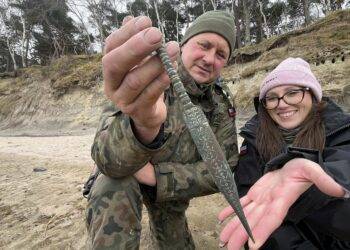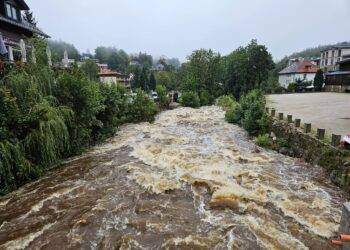Poland and Lithuania are advancing a strategic energy initiative with the Harmony Link, a new power connection set to enhance the energy security of the region by 2030. The agreement for this crucial project was signed by Polskie Sieci Elektroenergetyczne (PSE) and Litgrid, the Lithuanian transmission system operator. The decision to lay the power line overland instead of the initially planned Baltic Sea route marks a significant shift in the project’s trajectory.
The Harmony Link project entails constructing a new 220 kV dual-circuit alternating current line between the Ełk Bis station in Poland and a new station in Gizai, Lithuania. In Poland, PSE will build two new stations, Norki and Wigry, and upgrade the existing 220 kV line from Ostrołęka to Ełk Bis. The project is scheduled to reach a major milestone by the end of 2024, when PSE and Litgrid are expected to make a final investment decision, paving the way for procurement processes and obtaining necessary permits. Construction tenders are planned for 2026, with the new connection expected to be operational by the end of 2030.
Initially, the Harmony Link was envisioned as an undersea cable stretching over 300 kilometers, circumventing the Russian exclave of Kaliningrad. The submarine cable was to connect the Żarnowiec substation in Poland’s Pomeranian Voivodeship with the Darbenai substation in Lithuania’s Kretinga region. This route was projected to enhance the Baltic states’ energy security by synchronizing Lithuania, Latvia, and Estonia’s power systems with the Continental European synchronous area.
However, in April 2023, PSE and Litgrid canceled the tenders for the submarine version of the Harmony Link due to substantial increases in cable and converter station costs. This led the operators to explore more cost-effective and timely alternatives, eventually settling on the overland route. A feasibility study conducted by the Gdańsk branch of the Institute of Power Engineering in June 2024 confirmed the technical viability of the overland option, assuring that the performance parameters of the interconnected systems would be comparable to the undersea solution.
The primary advantage of the Harmony Link is the synchronization of the transmission systems of Lithuania, Latvia, and Estonia with the Continental European synchronous area (CESA), reducing their current dependence on Russian frequency regulation. Currently, Poland and Lithuania are connected by the LitPol Link, an overland power connection that has been operational since late 2015.
Background and Strategic Implications
The transition from an undersea to an overland power link represents a strategic pivot in Poland and Lithuania’s approach to regional energy security. The Harmony Link project underscores the ongoing efforts to integrate the Baltic states into the broader European energy network, thereby diminishing their reliance on Russian infrastructure.
This initiative is set against a backdrop of rising geopolitical tensions and the broader context of European efforts to diversify energy sources and routes. The completion of Harmony Link will mark a significant milestone in these endeavors, enhancing the resilience and stability of the region’s energy supply.
As Poland and Lithuania forge ahead with the Harmony Link, the project stands as a testament to the resilience and adaptability of regional energy strategies in the face of evolving economic and geopolitical challenges. The successful implementation of this project will not only bolster the energy security of Poland and Lithuania but also serve as a critical step towards greater energy independence for the Baltic states.


















